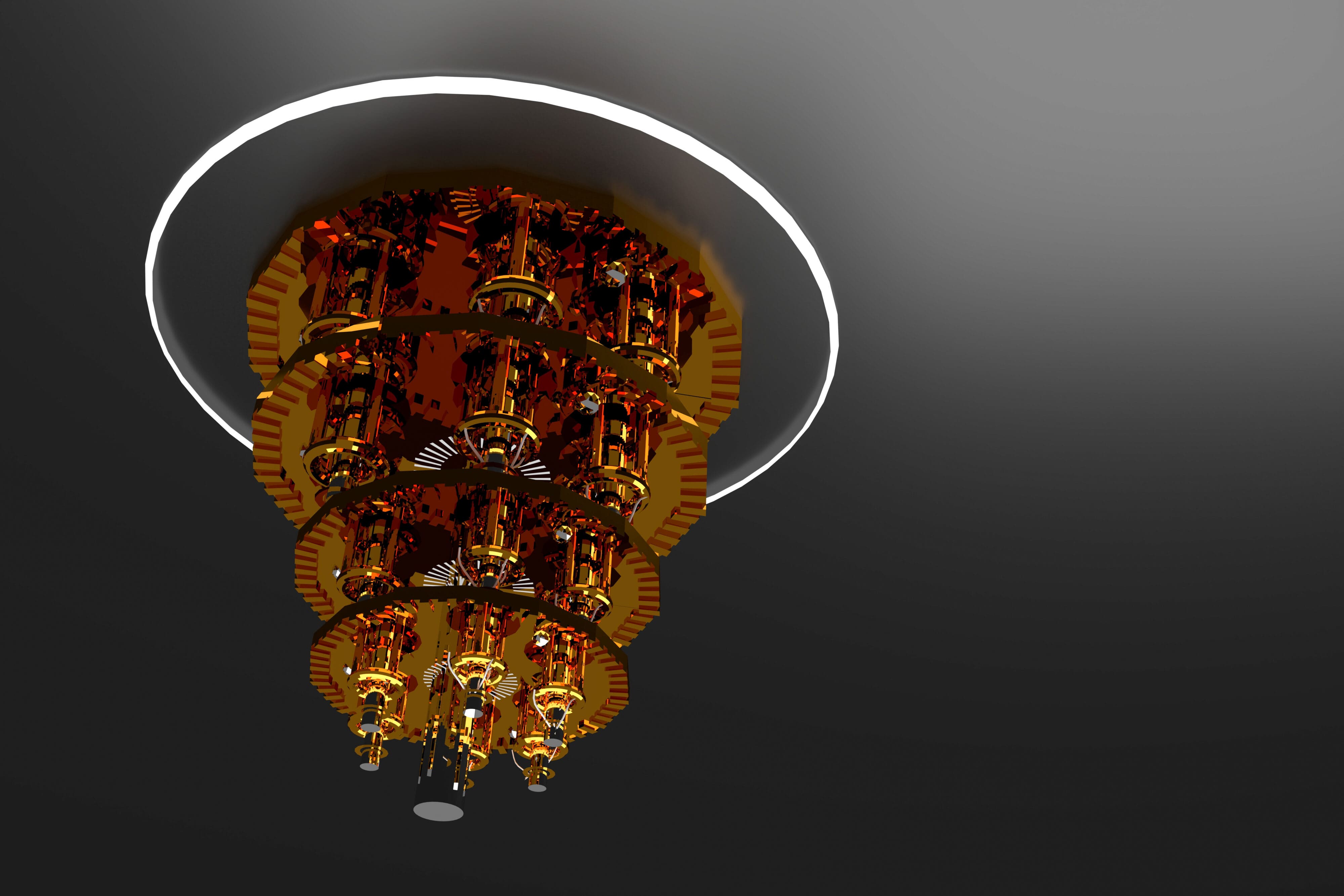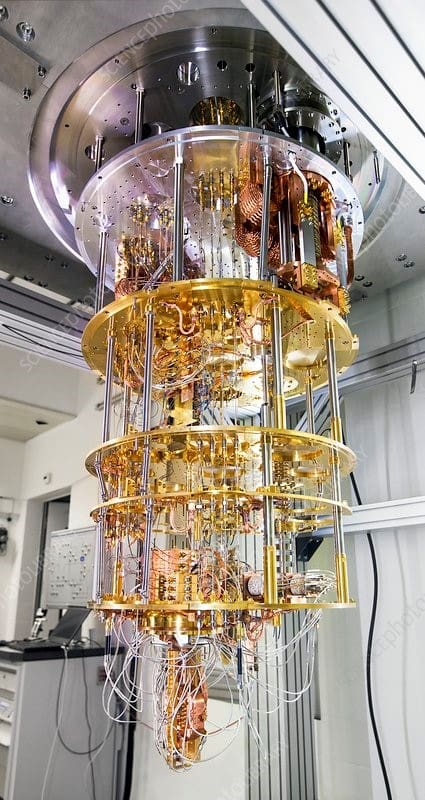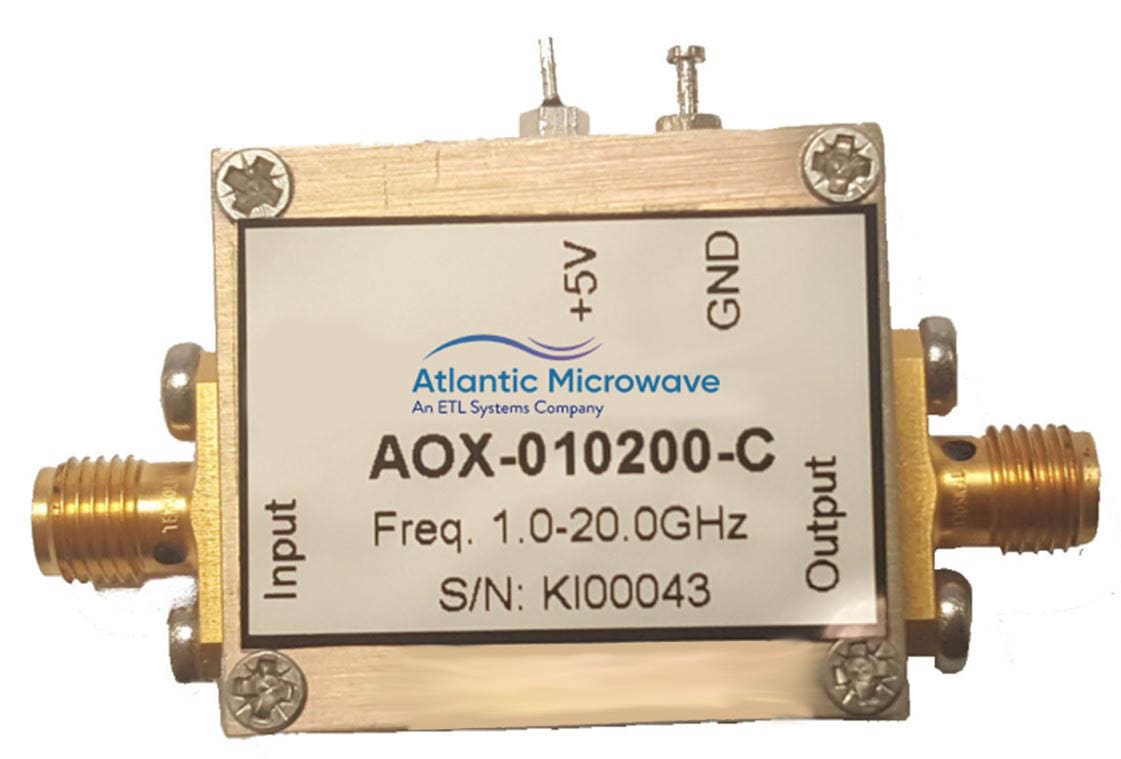Atlantic Microwave’s Cryogenic Amplifiers

UK based, Atlantic Microwave, work with the key players in the Cryogenic industry and this article looks at the background behind Quantum computing and the importance of Cryogenic RF components in making this new technology work.
Quantum Computing and Cryogenics
Quantum computing is an interdisciplinary of physics, cryogenics, electronics, and computer science. Classical computers’ structures are based on switches or transistor with two states, On or Off, 1 or 0. All the calculations and processing is performed using bits of information, which can be either 1 or 0. On the hand, quantum computers use quantum bits, or “qubits”, which use two main principles of quantum physics, superposition and entanglement. Superposition means a qubit can represent 1, 0 or a combination of both. Entanglement means two qubits in superposition are correlated with each other, and one state depend on the other one. Considering these two principles qubits can perform much more sophisticated processing, which would result in solving difficult problems which are not possible with classical computer or might take much longer processing times with supercomputer.
In physics, Cryogenics is the production and behaviour of materials at very low temperatures. The word has a Greek origin, from κρύο (cryo) meaning “cold” and γονική (genic) meaning “related to production”. Properties of material change at ultra-low temperature, leading to interesting field of study for researchers. This new understanding of material properties in different states from gas to liquid to a solid state, lead to new applications, technologies, and industries. That is the reason which made Cryogenics a hot topic in recent years and attracted huge amount of funding from different organisation.
The temperature of materials is related to the energy it contains, meaning rapidly moving molecules have a higher temperature. Cryogenics temperature are between -150°C to -273° C, the lower end is the absolute lowest temperature. Liquid gases in this temperature range can be used to freeze other material, known as Cryogens. The most common gases for cryogenics are oxygen, nitrogen, hydrogen, and helium, which can be used depending on the applications.
Cryostats
A cryostat (from Cryo meaning cold and stat meaning stable) is generally any device used to maintain low cryogenic temperatures of samples or devices inside the cryostat. They are used in different application of Cryogenics in science, engineering, and medicine. Low temperatures may be generated and maintained within a cryostat by using various refrigeration methods, most commonly using cryogenic fluid bath such as liquid helium. Therefore, it is usually assembled into a vessel, similar in construction to a vacuum flask or Dewar.

Quantum chips consist of arrays of qubits operating at a very low temperature. Precise control electronics is required for manipulation and reading qubits. It is possible to control the qubits in with a room temperature controller if the number of qubits is not huge, less than ten. If the numbers are higher, some specific technologies and equipment are required, such as Cryo-CMOS, which is CMOS operating at Cryogenics temperatures, allows for a closer system integration. Cryogenic components such as amplifiers and attenuators, with very low noise figure, operating at very low temperature are used. The faint signal from quantum bits is usually amplified by series of amplifiers before demodulation, and even the faintest noise can destroy the system.
The value of Cryogenic Amplifiers & their Applications
To increase the signal to noise ratio in quantum read-out circuit, Cryogenic low-noise amplifiers are used in sensitive quantum receiver systems and have revolutionized readout of quantum bits, operating in ultra-low temperature.
There are various applications of Cryogenics. One application during the World War II, which was the increase of metal resistance to wear when frozen to low temperatures. Based on this theory of cryogenic hardening, the commercial cryogenic processing industry was founded in 1966. Other applications include Nuclear magnetic resonance (NMR), Magnetic resonance imaging (MRI) and Power Transmission, in which Cryogens are used to cool the underground transmission line to reduce their resistance.
Future opportunities for Cryogenic components
Atlantic provides RF and Microwave components which work down to cryogenic temperatures of 4K and below, typically for Quantum Computing. Specifically, Atlantic Microwave offer different Low Noise Amplifiers that work to these extreme temperatures for use in these cryostat systems.
The AOX series are a range of miniature, versatile, small signal, low noise amplifier modules having a multi-octave bandwidth, with 25dB gain and a very wide operating temperature range of -269 to +100C. The MMIC design utilises GaAs PHEMT distributed amplifier MMIC technology, together with proprietary matching circuits within a robust light-weight aluminium alloy housing fitted with SMA Female connectors. They are available at different frequency ranges, from 1 to 20 GHz.
Applications of Cryogenics are expanding, as technology rapidly evolves. For instance, in radio astronomy, satellite and space communication, cryogenic cooling of receivers to reduce their noise temperature is crucially important, since the antenna noise is determined by the cosmic microwave background radiation (2.725 K) modified by the presence of atmosphere. Atlantic Microwave continue to develop cryogenic components with their recent expansion of Cryogenic Amplifiers for the Satellite Communications industry.
